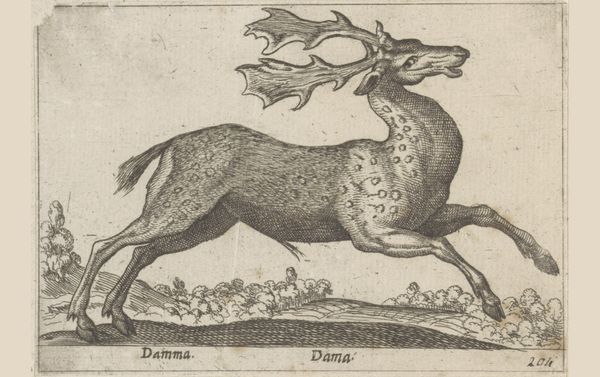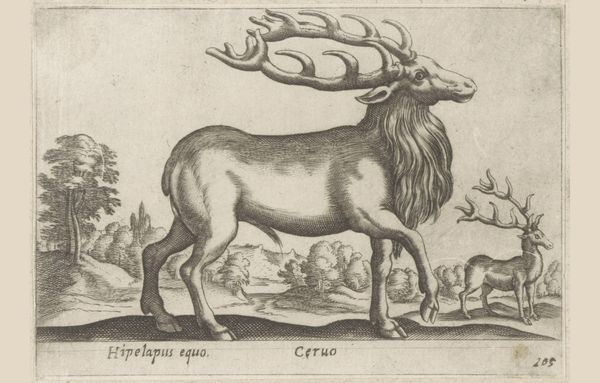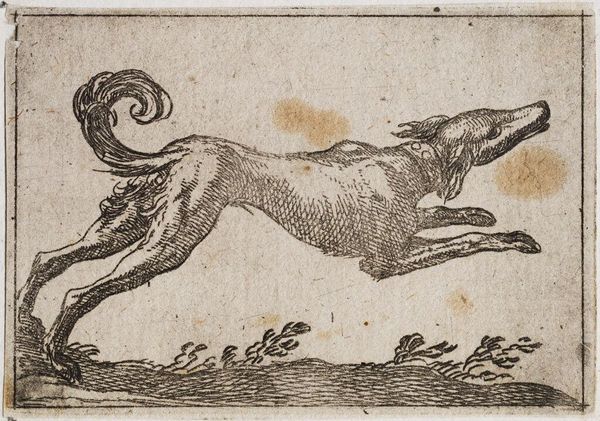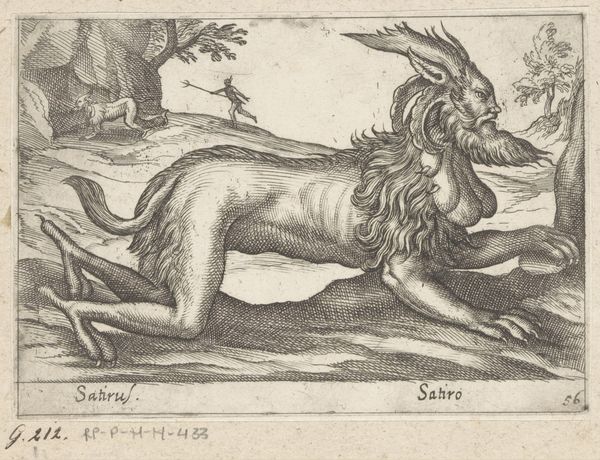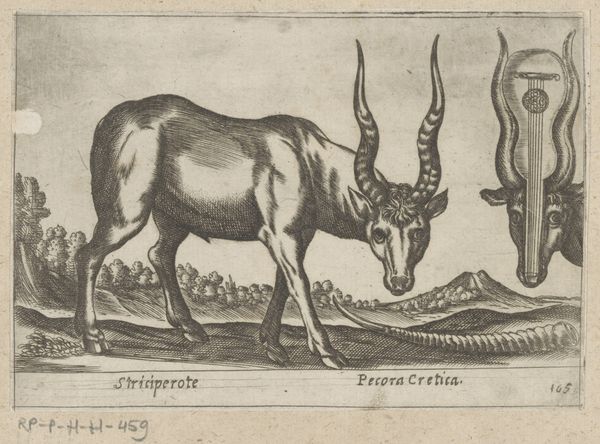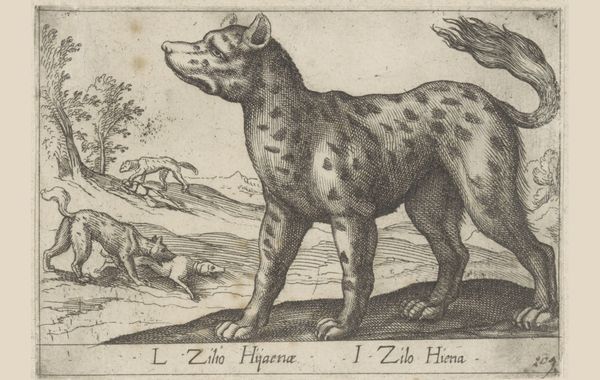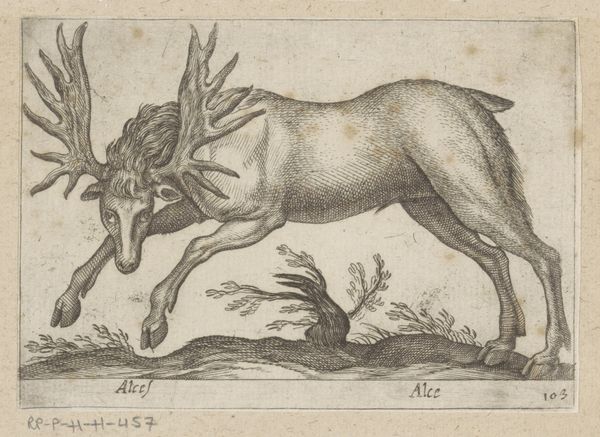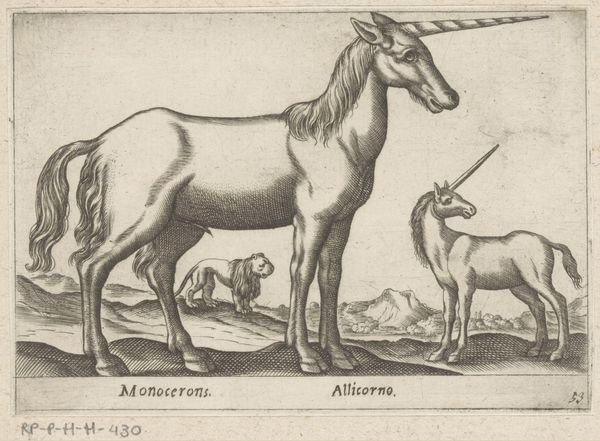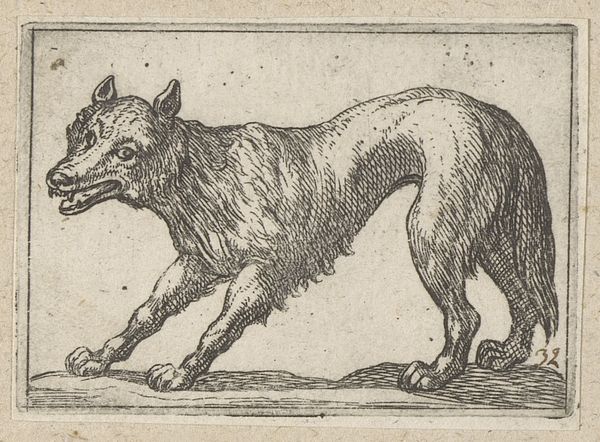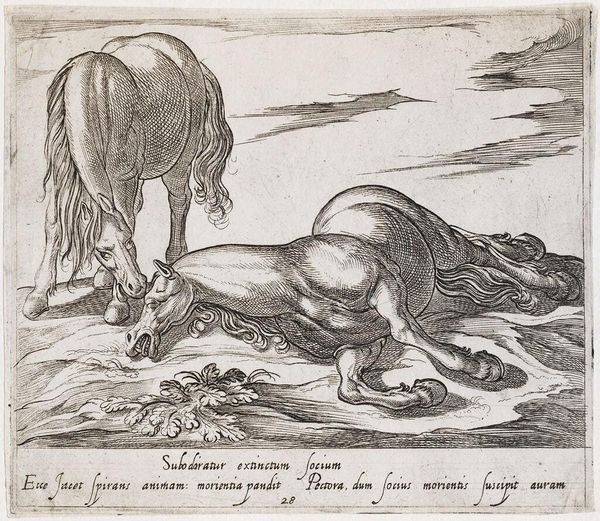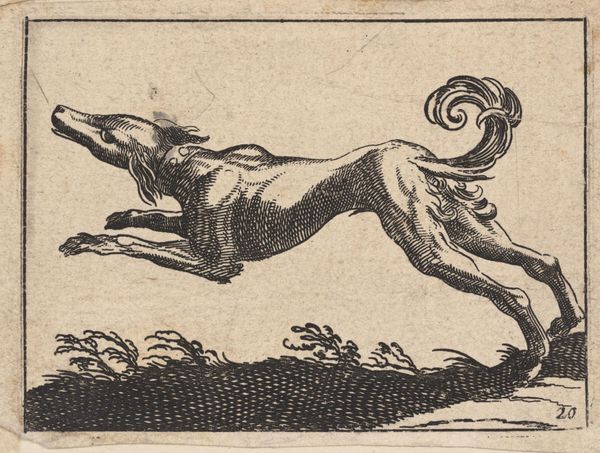
print, engraving
#
animal
# print
#
landscape
#
mannerism
#
history-painting
#
engraving
#
realism
Dimensions: height 95 mm, width 137 mm
Copyright: Rijks Museum: Open Domain
Curator: Let's turn our attention to "Hyena," an engraving completed before 1650 by Antonio Tempesta. Editor: My initial reaction is one of tension. The oversized hyena dominates the frame, creating an unsettling power dynamic. The frantic figures in the background only amplify that feeling of vulnerability. Curator: It's interesting how you interpret the scale. Tempesta often employed exaggerated proportions, a Mannerist characteristic intended to evoke drama. The very medium, printmaking, shaped the dissemination of images and knowledge at this time, including zoological depictions. Editor: Indeed, and the “history painting” tag is appropriate; what strikes me most is how the engraving serves as a document of cultural attitudes. The panicked people indicate how Europeans perceived wild animals at the time, casting them as threats to human existence. This imagery served to justify their domination or extermination of such creatures. Curator: Semiotically, consider the lines. The artist has this incredible ability to depict musculature using just a few carefully placed etched marks. How the play of light and shadow on the hyena’s coat suggests movement and volume. Editor: This animal became a symbol of so much that was “other,” feared because misunderstood. Its cultural portrayal becomes part of the history, regardless of what it says about hyenas themselves. Look at its canines: formidable. This may depict the cultural perceptions more than any genuine scientific accuracy. Curator: Absolutely, there's an element of myth-making here. But it’s through those historical perceptions—encoded here within line and form—that we are afforded insight into a past reality. Editor: And maybe it makes us examine our present assumptions about what we fear, and how those fears shape our understanding and treatment of other species. It provides a nice lesson on analyzing perceptions. Curator: I agree; viewing the piece, and pieces from its era, does invite the important questions of how we construct knowledge. Editor: It prompts a consideration about whose knowledge truly gets elevated and preserved. A potent message emanating from a simple image.
Comments
No comments
Be the first to comment and join the conversation on the ultimate creative platform.

